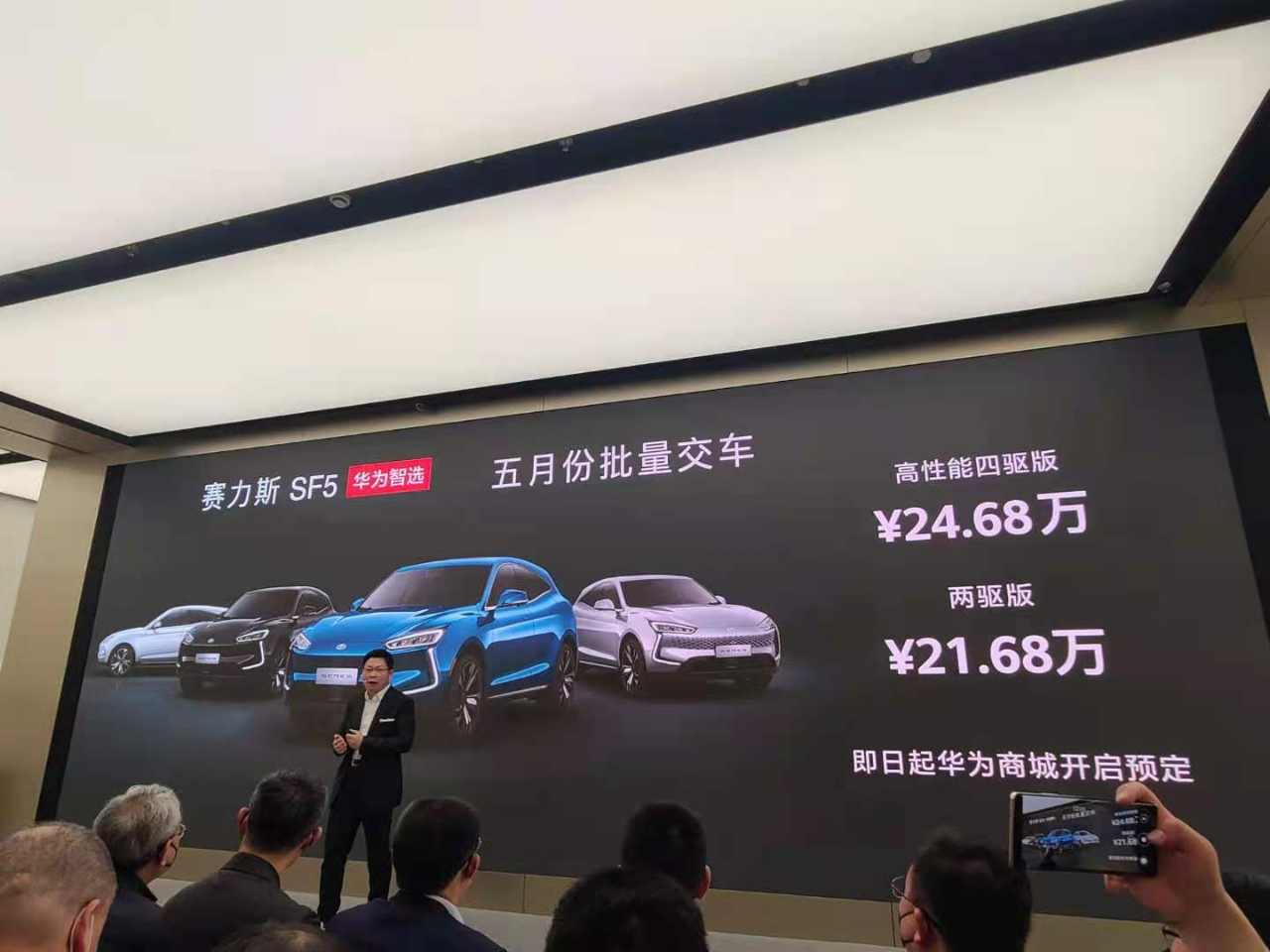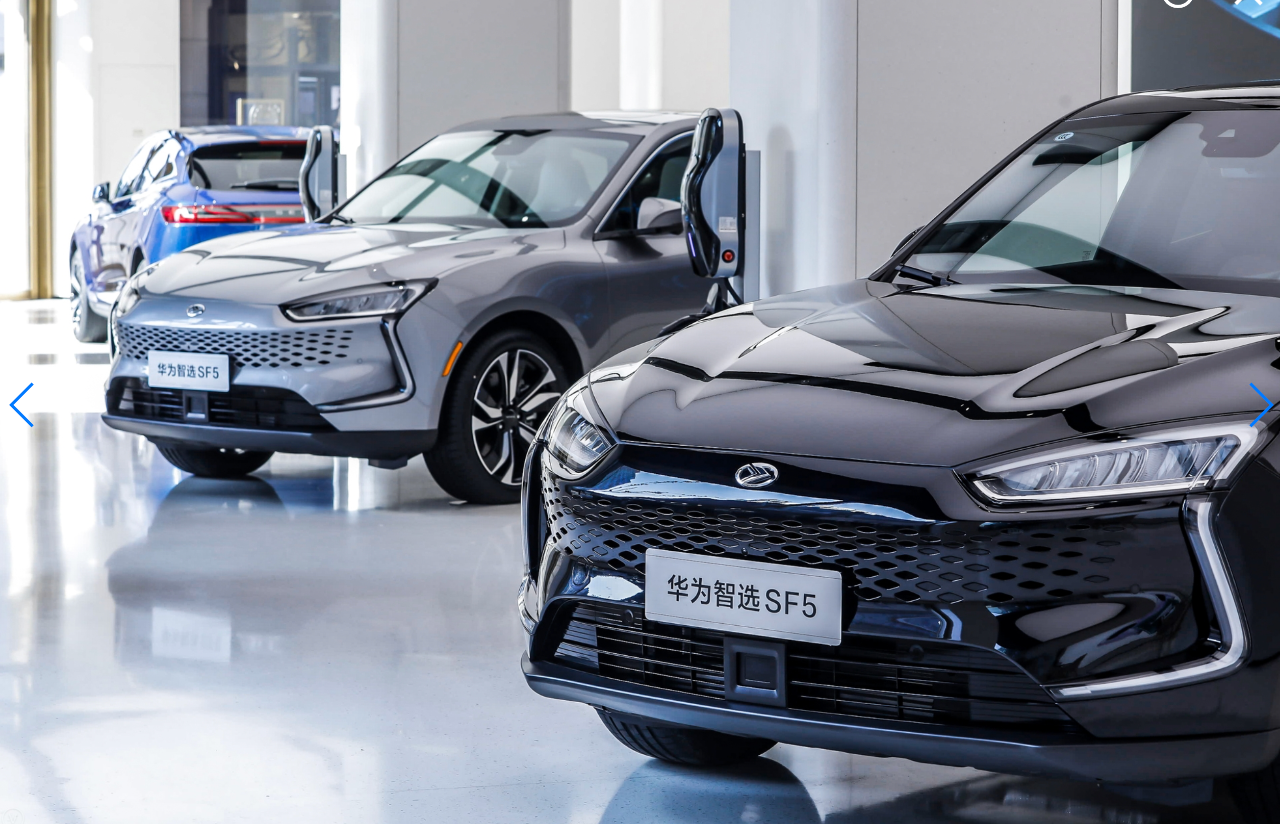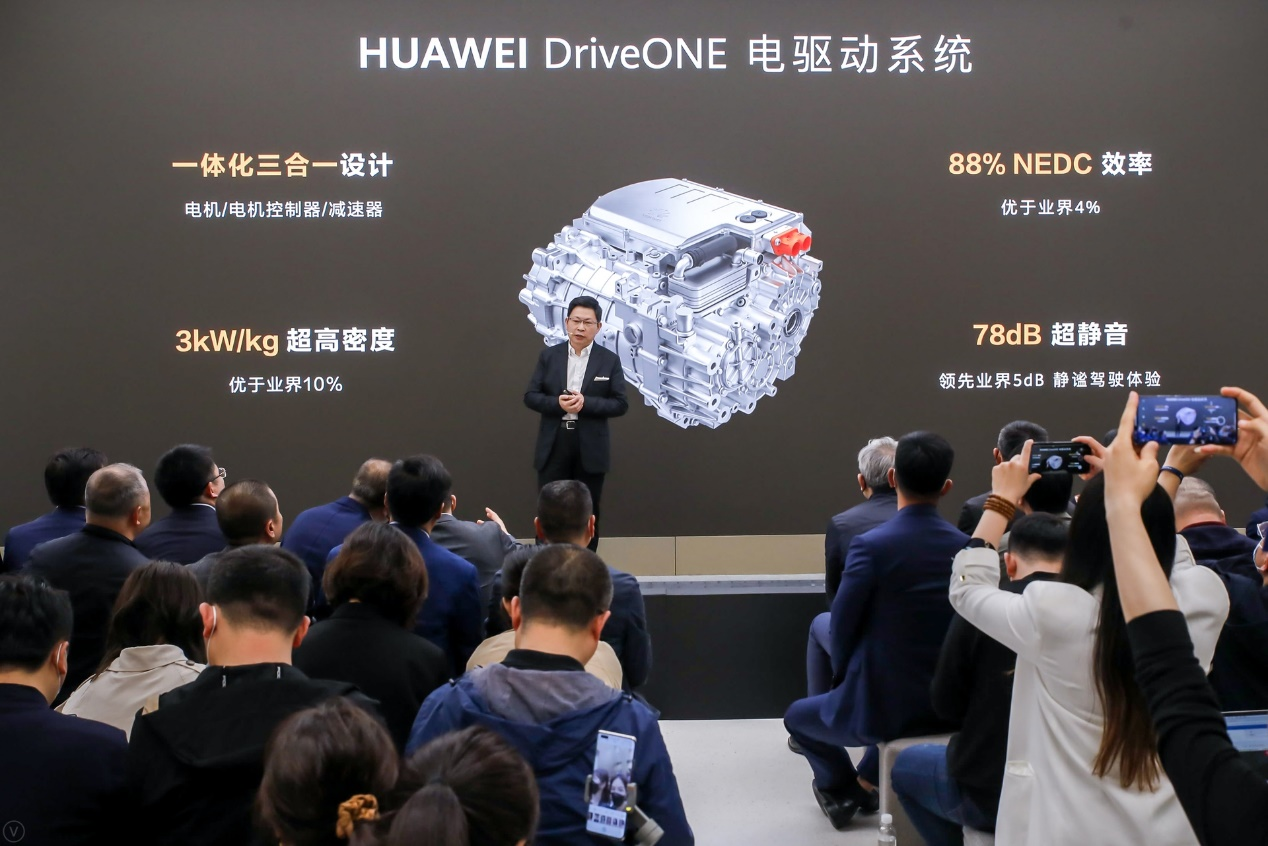Author: Lianyi Zhang
Huawei Starts Selling Cars.
On April 20th, at Huawei’s global flagship store located on Nanjing Road in Shanghai, Huawei’s CEO of Consumer Business, Richard Yu, announced that Huawei Smart Selection started selling the Seres SF5. The new car is available in two models with prices of 216,800 yuan and 246,800 yuan respectively, and will be sold through Huawei’s stores and flagship stores under the Huawei Smart Selection brand. Delivery is expected to begin in May.

When asked why Huawei chose to sell cars, Richard Yu admitted to feeling pressure. He stated that in just two years, Huawei has faced four rounds of sanctions from the United States, which has resulted in significant supplier challenges in the smartphone business. The electric vehicle market presents a unique opportunity to make up for sales losses. Although electric vehicles have lower sales volume compared with smartphones, the value of each electric vehicle is significantly higher.
According to Richard Yu, one of Huawei’s biggest advantages over other car companies is its extensive network of stores. Huawei currently has 12 flagship stores, over 5,000 high-end experience stores, and 60,000 retail and service outlets worldwide. Although selling cars is different from selling smartphones, Huawei has already announced plans to transform its Huawei exhibition halls in some shopping centers into showrooms for its new business.
In addition, the vehicles sold by Huawei will benefit from Huawei’s participation and integration of Huawei’s parts with the product. Although not yet fully customized, Huawei will undoubtedly deepen its involvement in product definition and make Huawei Smart Selection a symbol that goes beyond car brand logos.
A new model for intelligent electric vehicles is emerging, and the revolutionary transformation of the automotive industry is beginning.
Why Choose Extended Range Electric Vehicles?
Contrary to most new car companies’ first electric car models, Huawei’s first car for sale is an extended-range hybrid vehicle.
This decision was made considering consumer pain points. Richard Yu stated that according to research data from research institutions, the top five and top seven concerns for consumers when purchasing electric vehicles are all related to batteries and charging. These concerns include the inconvenience of charging electric vehicles, short driving range, and long charging time.
According to data, the main pain points for consumers remain the same after purchasing electric vehicles. 95% of users believe that “inadequate or malfunctioning charging stations” is the main point of pain, followed by “insufficient driving range and range anxiety” with a proportion of 72%, and “battery life degradation and rapid depreciation” with a proportion of 62%.Yu Chengdong believes that intelligent vehicles using range-extending technology can perfectly solve the problem of range anxiety. Range-extending electric technology can provide both electric vehicle driving experience and eliminate range anxiety like traditional fuel-powered cars, which is currently the best solution in the industry.
The SF5 by Seres operates on the principle of range-extending electric power. It is equipped with a 1.5T four-cylinder engine as a range extender based on the electric motor. The pure electric driving range is 180 kilometers. When the battery is low, the range extender burns fuel to generate electricity, which can provide a comprehensive range of more than 1000 kilometers, relieving users’ range anxiety.
Why Xiaokang Group?
Xiaokang Stock, which has over 20 years of experience in vehicle manufacturing, launched the Seres brand. Yu Chengdong says that it is precisely because of Xiaokang’s years of cultivation in the vehicle manufacturing field and research and development in range-extending technology that Huawei chose to work with them. In fact, as early as 2019, Huawei signed a cooperation agreement with Xiaokang to promote cooperation in the field of new energy vehicles.

On March 9th of this year, Huawei Terminal Co., Ltd. and Chongqing Xiaokang Industrial Group Co., Ltd. signed a cooperation memorandum in Shenzhen and discussed cooperation in the field of new energy vehicles. In Yu Chengdong’s opinion, Seres and Huawei, one emphasizes manufacturing, and the other emphasizes software and hardware electronisation. The cooperation between the two sides is a win-win.
In the cooperation with Seres, Huawei is not only positioned as a channel business, but also participates in car design and quality control. Yu Chengdong said that in this cooperation, Huawei applies its more than 30 years of quality control capability in product development, technology, design, and process.
What are the highlights of the first product?
In terms of product design, the SF5 by Seres is full of the “Huawei flavor.” The new car is equipped with HUAWEI DriveONE 3-in-1 electric drive system, HUAWEI HiCar smart connection system for people, cars, and homes, and HUAWEI Sound high-quality music experience.
Among them, the HUAWEI DriveONE 3-in-1 electric drive system was independently developed by Huawei as an ultra-convergent power field solution. It integrates seven major components, including MCU, motor, reducer, DCDC, OBC, PDU, and BCU. This system adds to deeper integration and higher-quality power and mechanical components. It provides a longer-range and higher-performance driving experience.
 # HUAWEI HiCar Solution
# HUAWEI HiCar Solution
HUAWEI HiCar solution can replicate Huawei’s mobile application ecosystem onto the car machine. It supports switching between applications such as navigation and music between the mobile phone and the in-car central screen anytime and anywhere. Users can continue playing their favorite songs on their phone in the car. In addition, users can also interact with the system through voice control, allowing for a more focused driving experience.
HUAWEI HiCar also enables connectivity with IoT devices. Users can remotely turn on smart home appliances, such as air conditioning and smart screens, before getting out of the car. With the car and the home controlled by HUAWEI HiCar, users can have a seamless and immersive experience.
HUAWEI SOUND is featured in the car for the first time. Constructed with 11 advanced audio units, the in-car surround system is fine-tuned by HUAWEI SOUND’s core technical team and acoustic experts, with a low frequency down to 30 Hz and a library-grade quietness of NVH (whole vehicle noise, vibration, and harshness) 38 dB (based on NVH value in idle state), providing the ultimate mobile music immersive experience.
Intel + Microsoft + Apple?
Although Huawei has announced that they will not build cars, they have made quite a few moves in the automotive industry.
Before the auto show, HUAWEI held an HI product launch conference, releasing the HarmonyOS intelligent cockpit, the smart driving computing platform MDC810, 4D imaging radar, autonomous driving open platform, and intelligent thermal management system. During the auto show, they showcased the joint collaboration with Beijing Automotive Industry Corporation (BAIC) the Arcfox Alpha S; and the joint collaboration with Seres SF Motors the Seres SF5. Additionally, the company launched a new vehicle in collaboration with Hongqi at the Shanghai Auto Show.
These actions show that Huawei has the capability to build cars. The reason for choosing “not to build cars” is to hope that car companies can adopt their complete solution for smart driving. Huawei has said that compared to OEM, “Intel + Microsoft” is Huawei’s goal in the auto industry.
However, Huawei’s goals extend beyond “Intel + Microsoft.”
On the one hand, Huawei is already involved in car design and quality control, which means they are already defining the product. Next, they may completely control the design of the car, allowing car manufacturers to only do bodywork and final assembly.
On the other hand, Huawei is also involved in car sales, and even has “Huawei Smart Selection” as part of their marketing. This is similar to Apple’s approach – first selling through direct retail stores, then integrating their ecosystem.
Even if Huawei decides not to build cars, they can still have deep control in all aspects, with the high-value parts essentially controlled by Huawei. For traditional automakers, this model is undoubtedly disruptive.
Compared to the mobile phone industry, Huawei’s control in the automotive industry can be even deeper, creating greater value.
A new model has emerged. However, this model basically belongs only to Huawei.
This article is a translation by ChatGPT of a Chinese report from 42HOW. If you have any questions about it, please email bd@42how.com.